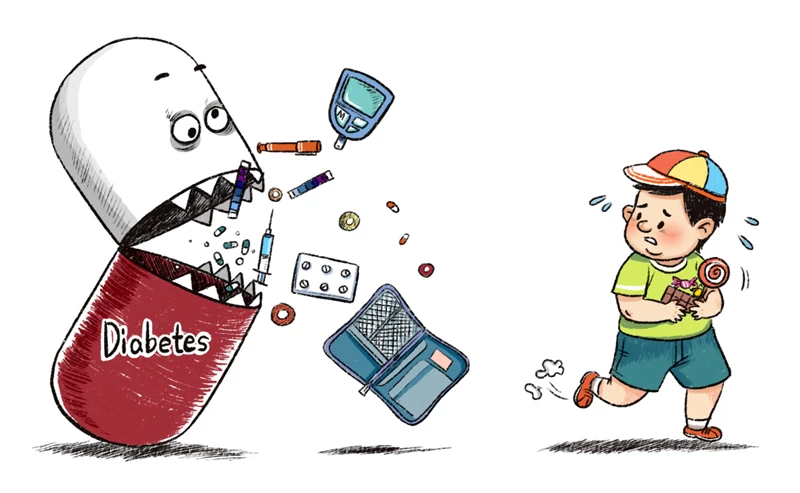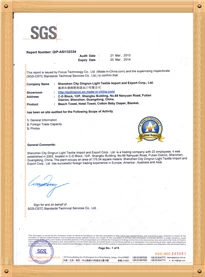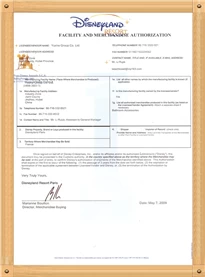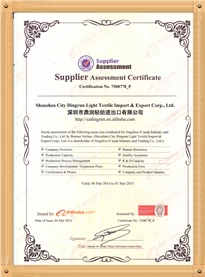Time to spot signs of diabetes in kids
Leon Li
2018-11-15 15:18:29
Diabetes is a global epidemic that concerns every family. Spotting the warning signs is vital to prevent the life-threatening complications associated with the condition. Yet this is much easier said than done because parents are struggling to spot the warning signs of diabetes in their own children.
New research from the International Diabetes Federation shows that an alarming nine in 10 Chinese parents (89 percent) would have trouble identifying the warning signs, despite the majority of people surveyed (70 percent) having a family member with diabetes. One in four (24 percent) would not be able to spot them at all. In response, the IDF is urging parents and other family members to test their knowledge of diabetes through a new online assessment.
The research comprised an online survey of 7,000 people, consisting of statistical representations from the United Kingdom, Brazil, China, India, South Africa, Turkey and the United States. National representative quotas were applied for gender, age (18 to 65 years old) and region. And 46 percent of those surveyed were parents with at least one child aged below 18 years.
Last year, diabetes was responsible for four million deaths, 840,000 in China alone. One in every 10 people in China is now living with diabetes. Left untreated or unmanaged, diabetes can lead to life-changing complications, including blindness, amputation, kidney failure, heart attack and cerebral stroke. The number of people living with diabetes in China is only set to increase over the coming years, so educating parents about the warning signs and risk factors is essential to halt the rise.
The warning signs of diabetes include excessive thirst, frequent urination, a lack of energy, blurred vision, slow healing wounds and numbness in the feet and/or hands. Unfortunately, these signs can be difficult to spot, and even when they are spotted, they are often mistaken as symptoms of different diseases and conditions.
A lack of knowledge about diabetes means that spotting the warning signs is not just a problem for parents. It is also an issue that has an impact on a cross-section of society. Four in five adults across the globe failed to correctly identify the warning signs of diabetes in the IDF study. This is a major concern, because the signs are milder for type 2 diabetes, the most prevalent form of the condition that is responsible for about 90 percent of all diabetes cases.
So, while the key to halting the rise in diabetes is prevention, parents are not given enough access to education to help them identify the warning signs. Type 2 diabetes can, in many cases (up to 80 percent according to some studies) be prevented by adopting a healthy lifestyle. Yet it takes knowledge and resources to do this and there is pressure on governments and health bodies to launch better prevention programs. We cannot expect people to live healthier lives when they do not know how to do so. They need access to the information that will help them. Educating parents on the warning signs of diabetes is vital to ensure early diagnosis and treatment.
Many families are unable to afford to adopt a healthy diet as the cheapest food is often the unhealthiest. Powerful advertising still tempts children to over-consume discounted foods high in sugar, salt and fat, and more action is needed to make healthier diets more appealing. Similar marketing campaigns for healthier options could have a great impact on helping families to change their eating habits.
It is important that everyone learns to identify the warning signs of diabetes, because it has devastating complications if not treated early and managed appropriately. We all have a role to play but governments need to do more to help us protect family members from developing type 2 diabetes and its life-threatening complications, and to ensure people with all types of diabetes have access to the medicines and care they require.
There's work to be done, but if governments, healthcare organizations and families across the globe take action now, we will be in a better position to discover, manage and prevent diabetes for future generations.
New research from the International Diabetes Federation shows that an alarming nine in 10 Chinese parents (89 percent) would have trouble identifying the warning signs, despite the majority of people surveyed (70 percent) having a family member with diabetes. One in four (24 percent) would not be able to spot them at all. In response, the IDF is urging parents and other family members to test their knowledge of diabetes through a new online assessment.
The research comprised an online survey of 7,000 people, consisting of statistical representations from the United Kingdom, Brazil, China, India, South Africa, Turkey and the United States. National representative quotas were applied for gender, age (18 to 65 years old) and region. And 46 percent of those surveyed were parents with at least one child aged below 18 years.
Last year, diabetes was responsible for four million deaths, 840,000 in China alone. One in every 10 people in China is now living with diabetes. Left untreated or unmanaged, diabetes can lead to life-changing complications, including blindness, amputation, kidney failure, heart attack and cerebral stroke. The number of people living with diabetes in China is only set to increase over the coming years, so educating parents about the warning signs and risk factors is essential to halt the rise.
The warning signs of diabetes include excessive thirst, frequent urination, a lack of energy, blurred vision, slow healing wounds and numbness in the feet and/or hands. Unfortunately, these signs can be difficult to spot, and even when they are spotted, they are often mistaken as symptoms of different diseases and conditions.
A lack of knowledge about diabetes means that spotting the warning signs is not just a problem for parents. It is also an issue that has an impact on a cross-section of society. Four in five adults across the globe failed to correctly identify the warning signs of diabetes in the IDF study. This is a major concern, because the signs are milder for type 2 diabetes, the most prevalent form of the condition that is responsible for about 90 percent of all diabetes cases.
So, while the key to halting the rise in diabetes is prevention, parents are not given enough access to education to help them identify the warning signs. Type 2 diabetes can, in many cases (up to 80 percent according to some studies) be prevented by adopting a healthy lifestyle. Yet it takes knowledge and resources to do this and there is pressure on governments and health bodies to launch better prevention programs. We cannot expect people to live healthier lives when they do not know how to do so. They need access to the information that will help them. Educating parents on the warning signs of diabetes is vital to ensure early diagnosis and treatment.
Many families are unable to afford to adopt a healthy diet as the cheapest food is often the unhealthiest. Powerful advertising still tempts children to over-consume discounted foods high in sugar, salt and fat, and more action is needed to make healthier diets more appealing. Similar marketing campaigns for healthier options could have a great impact on helping families to change their eating habits.
It is important that everyone learns to identify the warning signs of diabetes, because it has devastating complications if not treated early and managed appropriately. We all have a role to play but governments need to do more to help us protect family members from developing type 2 diabetes and its life-threatening complications, and to ensure people with all types of diabetes have access to the medicines and care they require.
There's work to be done, but if governments, healthcare organizations and families across the globe take action now, we will be in a better position to discover, manage and prevent diabetes for future generations.
The above news was excerpted from china daily by China towel supplier Shenzhen City Dingrun Light Textile Import and Export Corp.Ltd, a company specialized in producing baby diapers, baby bibs, beach towel, blankets, bath towels, tea towels, compressed towels, microfiber towels etc.

















